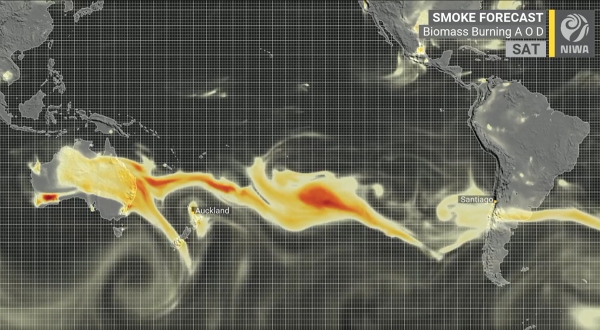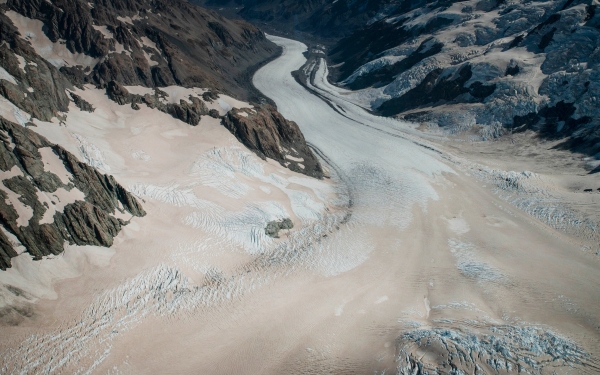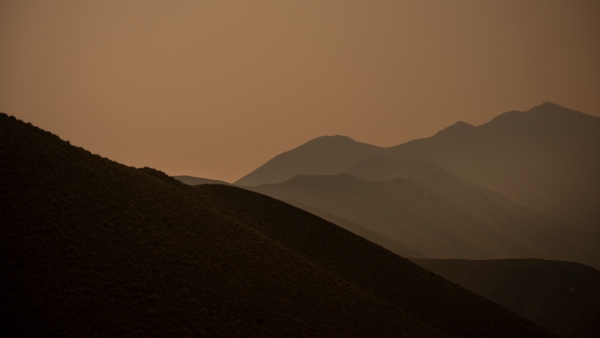On New Year’s Day 2020, many New Zealanders looked out on near apocalyptic scenes. It was mid-summer, mid-afternoon, and the skies were sci-fi orange. The sun had all but disappeared.
Within days, reports started coming in of glaciers in the Southern Alps turning from glistening white to a dirty cream.
Millions of hectares of Australian bush were on fire, and the ash was billowing 2,000km across the Tasman Sea and landing on our doorstep.
Known in Australia as Black Summer, these bushfires raged for 10 months, searing the landscape and leaving a trail of destruction: 34 human lives lost, 20% of the country’s forests burnt and an estimated 3 billion dead animals. In all, approximately 14.3 million hectares of land was scorched.
According to the New South Wales Rural Fire Service, the fires were “so wild and erratic that some days they exceeded the worst-case-scenario predictions of a sophisticated computer program.”
They were also among the largest wildfires recorded. So big, they created their own weather, lofting smoke and ash as high as 20km into the stratosphere and impacting the atmosphere in ways that have not been seen before.
In Central Otago, NIWA’s Lauder Atmospheric Research Station specialises in atmospheric research, measuring CFCs, ozone, UV levels and greenhouse gases with world-class instruments and a renowned research team.
Michael Kotkamp is one of those atmospheric researchers. He remembers vividly the day the skies turned orange.
“You could smell it. The smoke was slowly building on New Year’s Eve and by the next day, a thick smoky duvet had formed over Lauder and was blocking out the sun,” says Kotkamp.
He immediately sent pictures to his Lauder colleagues, including fellow atmospheric technician Dan Smale, who was holidaying in Nelson at the time.
“I was following the developments on the radio. I knew the fire plume was gigantic and that our measurements may capture something high up in the atmosphere. What I wasn’t expecting was the photo that Michael sent – it was not a plume in the distant skies, but smog thrown over us from over 1,500km away,” says Smale.
Immediately, Dan remotely logged into one of Lauder’s instruments and saw a prodigious spike in carbon monoxide levels.
Over the following 18 months, Dan worked withDr Susan Strahan from NASA’s Goddard Flight Center in the United States to study the effects of the wildfire smoke on the ozone layer. They detected unusual chemical changes in the stratosphere – the region in our atmosphere roughly 16–20km above the Earth’s surface. This is where our ozone layer resides – part of the protective shield that absorbs much of the sun’s damaging ultra-violet radiation.
This region is rich in chlorine-containing gases, such as hydrogen chloride (HCl). These gases are usually stable and do not undergo many chemical changes. However, if other airborne chemicals interfere with them, their structure can alter, causing them to release their chlorine atoms.
This is bad news for ozone, because just one atom of chlorine can destroy over 100,000 ozone molecules before it is removed from the atmosphere.
“Anything that messes with the chlorine family of gases – like HCl – has the potential to harm the ozone. In the months following the bushfires, we observed that HCl levels had dropped by about half. There were also increases in chlorine monoxide (ClO), another chemical that plays an important role in ozone depletion,” says Smale.
The changes occurred gradually over a four- to five-month period after the fires, before reversing over the following four months.
“We’d never seen anything like it before. While we were witnessing these increases and decreases in certain chemicals, we were unable to replicate what we were seeing in any models, meaning we didn’t know the processes behind them. The reactions taking place in the stratosphere with these smoke aerosols are an enigma,” says Smale.
The finding reveals an important gap in our understanding of ozone chemistry, and he says more work on the interactions between wildfires and the ozone layer is clearly needed.
Global warming means that wildfires are likely to become more frequent and intense. It is estimated that climate change has boosted Australia’s bushfire risk by at least 30%, with its bushfire season lengthening by almost a month over the past 40 years.
Predictions that make finding out what’s happening in the skies above, all the more important.
This story forms part of Water and Atmosphere - December 2022, read more stories from this series.



